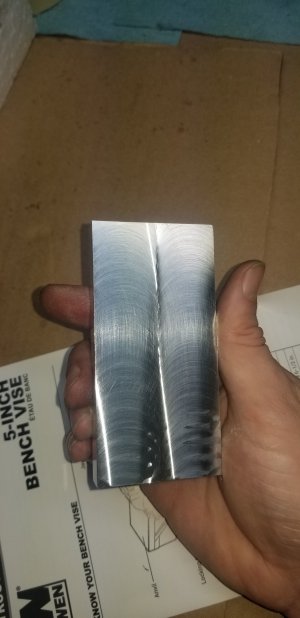- Joined
- May 13, 2019
- Messages
- 1,016
Speeds are dependent on the material. Each material class will have a recommended cutting speed that is used to calculate RPM and the same calculation can be used to find a starting speed, whether you're turning or using a milling cutter like your fly cutter. There are tables for cutting speeds, given in SFM (surface feet per minute) all over the net and in reference texts. LMS has a popular one.
Find the material you are working with and look up the cutting speed for the tool you're using. For 1018 being cut with a carbide tool, CS is about 800 sfm. Now plug that CS into the formula: RPM = CS X 3.82 / Diameter, where CS is your cutting speed from the table, 3.82 is a constant and Diameter is the diameter of the cutter on the mill or the work piece on the lathe. In your case, the minimum diameter of your Superfly is 1.5" or so. Plugging in the values, RPM = 800 X 3.82 / 1.5 = 2,037 rpm. This same cut in aluminum would max out the speed of your mill.
Thanks, mikey. The LMS table is a little confusing since it shows 800-885 FPM for lathe work for 1018 and 65-110 FPM for milling 1018. Unless I'm reading the tables wrong. Why would it be different?
Looking in my 25th edition Machinery's Handbook at "Table 11. Recommended Cutting Feeds and Speeds for Milling Plain Carbon and Alloy Steels", for 1018 steel, I see 800-1050 FPM (Opt.) for coated carbide end milling. That matches your value. Feed is 0.007"/tooth (Opt.).
So, for calculating the feed rate: fm = ft X number teeth X RPM = 0.007"/tooth X 1 tooth X 2,037 RPM = 14.3 IPM. That seems a little high.


